Trigonometric Equations
Trigonometric Equations Revision
Solving Trigonometric Equations
Using what we know already about sine, cosine, and tangent, (or sin, cos, and tan), we need to be able to solve equations involving these.
For example,
\sin(x)=\dfrac{\sqrt{3}}{2}
We will look at how to solve equations like this graphically, and algebraically.
Solving Graphically
We can look at the sin, cos, and tan graphs to solve equations.
For example, estimate the solutions to
\sin(x)=0.2
\cos(x)=0.2
\tan(x)=0.2
Between 0\degree and 360\degree
Sine graph
To solve, draw a line on the sine graph at y=0.2 and read off the solutions:
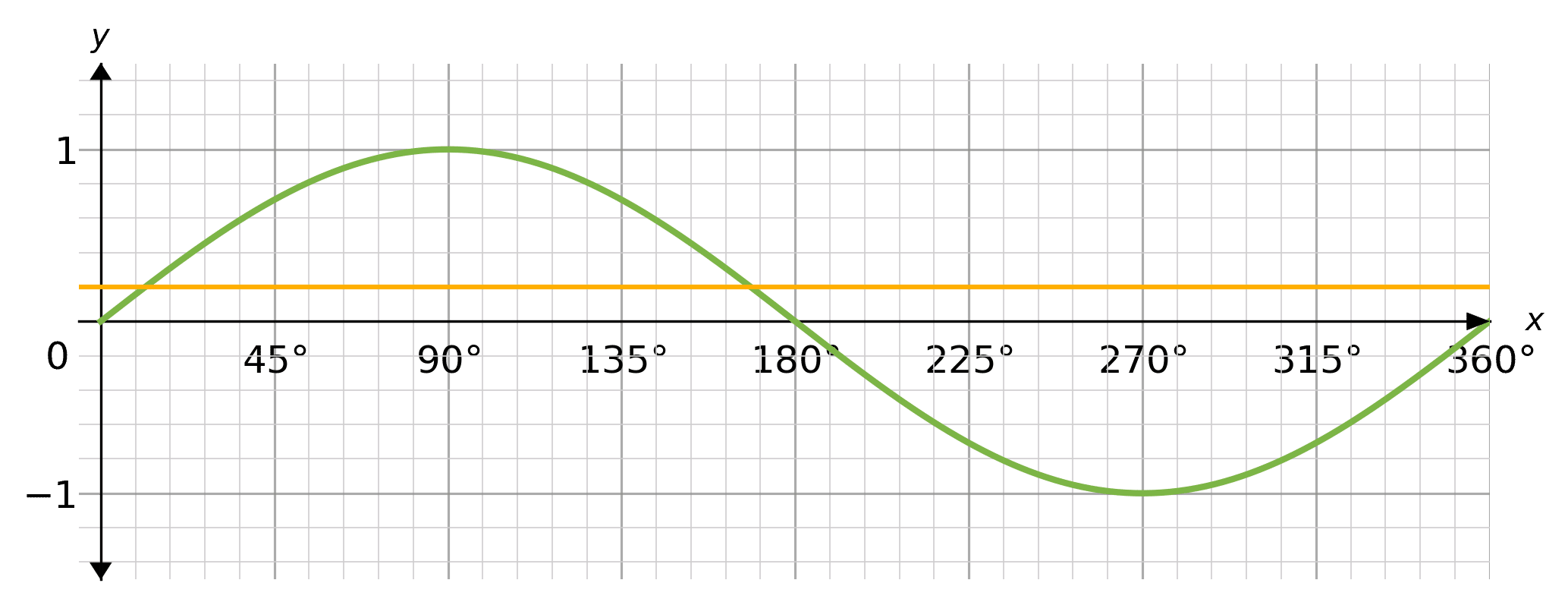
The yellow line crosses the sin graph at approximately x=11\degree and x=169\degree. These are the approximate solutions to the equation \sin(x)=0.2
Cosine graph
To solve, draw a line on the cosine graph at y=0.2 and read off the solutions:
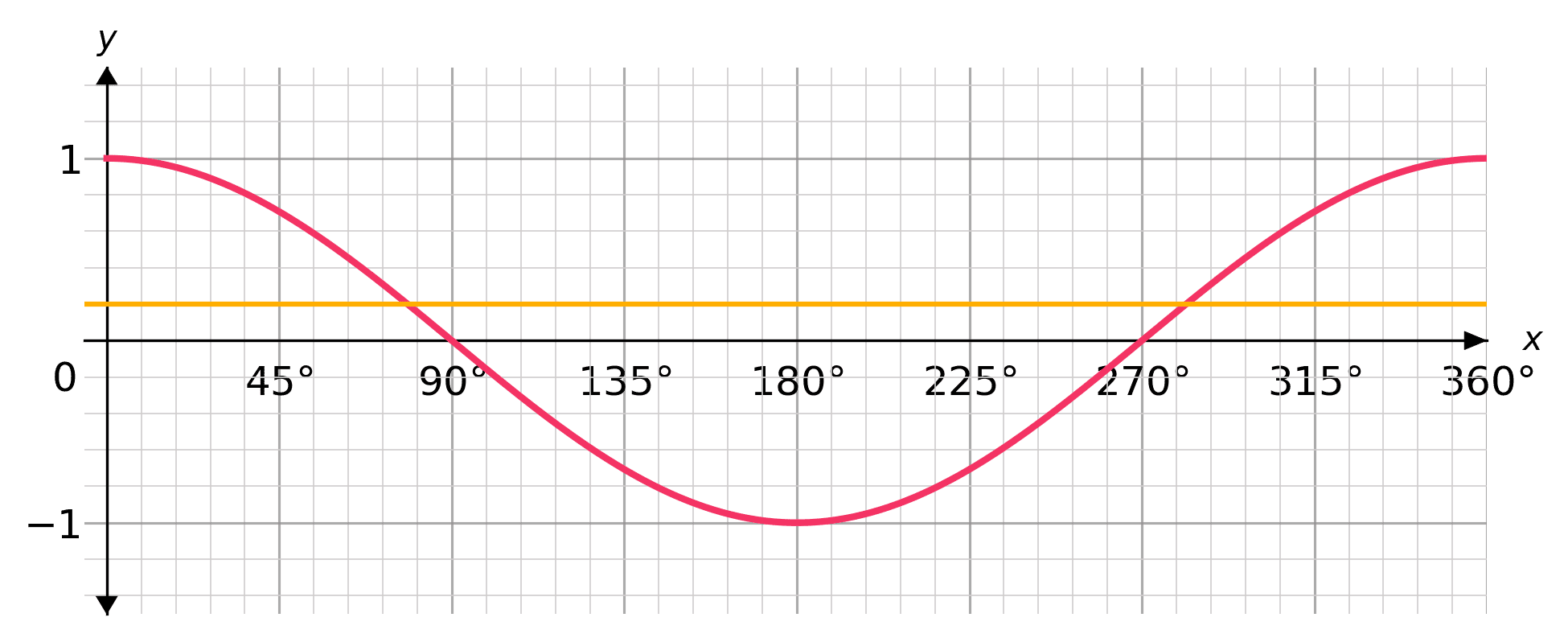
The yellow line crosses the cos graph at approximately x=78\degree and x=282\degree. These are the approximate solutions to the equation \cos(x)=0.2
Tangent graph
To solve, draw a line on the tangent graph at y=0.2 and read off the solutions:
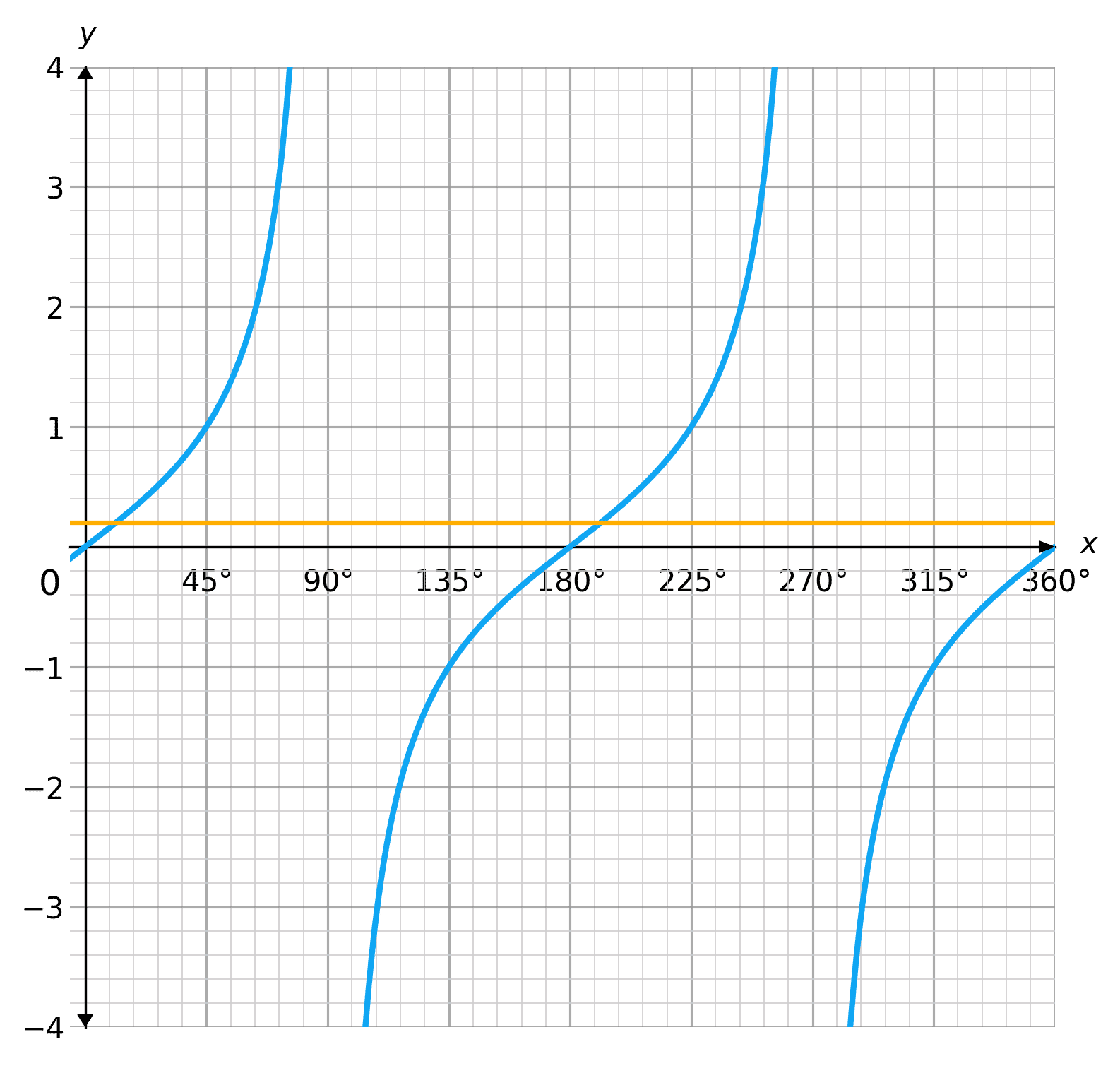
The yellow line crosses the tan graph at approximately x=11\degree and x=191\degree. These are the approximate solutions to the equation \tan(x)=0.2
Solving Algebraically – Sine
Sometimes, you may not be given a graph, and so, it would not be possible to accurately solve a trigonometric equation graphically. In this case, we would solve the equation algebraically, using our calculator.
You will always be asked to solve algebraic trigonometric equations for values between 0\degree and 360\degree.
We can use our calculator, and the properties of sine to solve trigonometric equations involving sine.
For example:
\sin(x)=\dfrac{\sqrt{3}}{2}
We can use our calculator:
\sin^{-1}\left(\dfrac{\sqrt{3}}{2}\right)=60\degree
However, our calculator only gives us one value, but we know there are more solutions between 0\degree and 360\degree.
As the sine graph is positive between 0\degree and 180\degree, we can find the other value by…
180\degree-60\degree=120\degree
So the final solutions are x=60\degree, 120\degree.
Solving Algebraically – Cosine
We can use our calculator, and the properties of cosine to solve trigonometric equations involving cos.
For example:
\cos(x)=\dfrac{1}{2}
We can use our calculator:
\cos^{-1}\left(\dfrac{1}{2}\right)=60\degree
However, our calculator only gives us one value, but we know there are more solutions between 0\degree and 360\degree.
As the cosine graph is positive between 0\degree and 360\degree, we can find the other value by…
360\degree-60\degree=300\degree
So the final solutions are x=60\degree, 300\degree.
Solving Algebraically – Tangent
We can use our calculator, and the properties of tangent to solve trigonometric equations involving tan.
For example:
\tan(x)=\sqrt{3}
We can use our calculator:
\tan^{-1}(x)=60\degree
However, our calculator only gives us one value, but we know there are more solutions between 0\degree and 360\degree.
As the tangent graph repeats every 180\degree, we can find the other value by…
60\degree+180\degree=240\degree
So the final solutions are x=60\degree, 240\degree.
Example 1: Solving Graphically
Use the cosine graph to estimate the solutions to
\cos(x)=0.4
between 0\degree and 360\degree
[3 marks]
Draw the line y=0.4 onto the graph and read off the solutions:

The solutions are approximately x=68\degree and x=293\degree
Example 2: Solving Algebraically
Solve
\sin(x)=\dfrac{5}{8}
For values between 0\degree and 360\degree, giving your answers to 2 decimal places.
[3 marks]
Let’s find the first value using our calculator
\sin^{-1}\left(\dfrac{5}{8}\right)=38.68\degree
As sin is positive between 0\degree and 180\degree
180-38.68=141.32\degree
Solutions: x=38.68\degree, 141.32\degree
Trigonometric Equations Example Questions
Question 1: Graphically solve the equation
\tan(x)=1.3
approximately, between 0\degree and 360\degree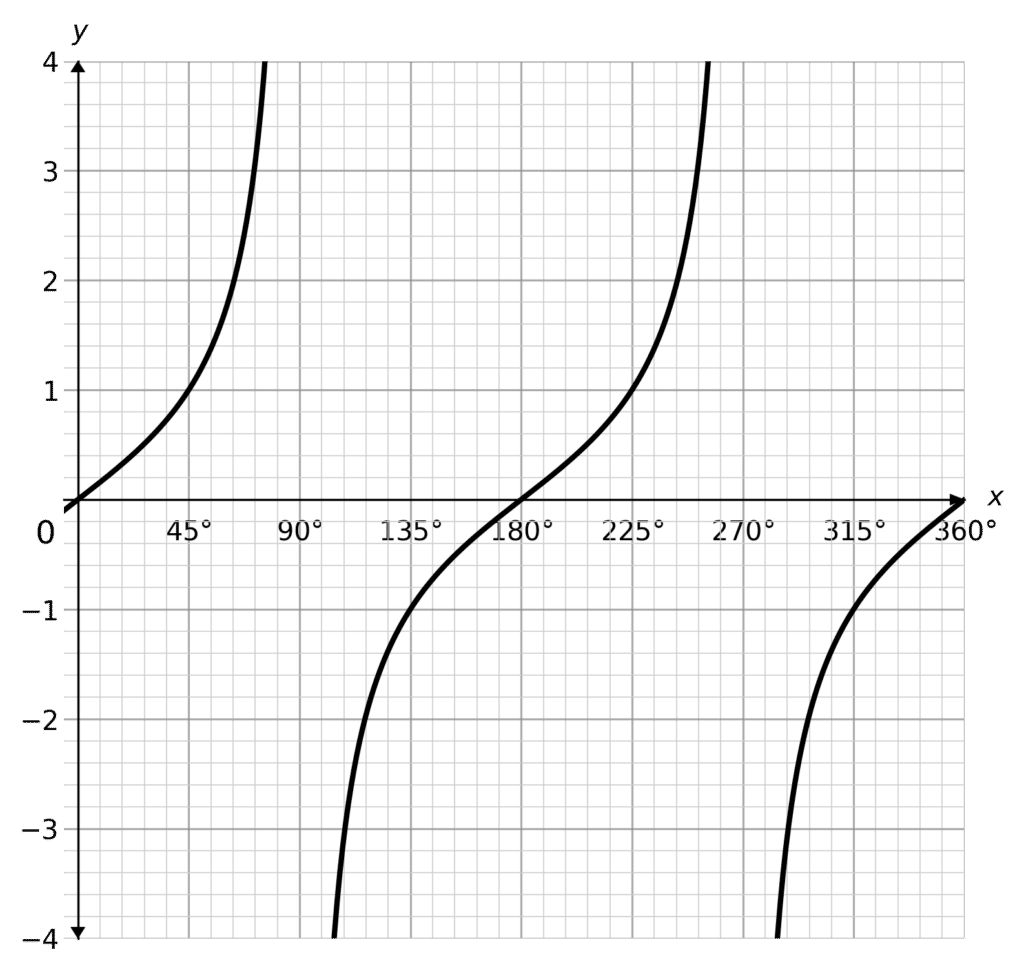
[3 marks]
Draw the line y=1.3 and read the solutions:
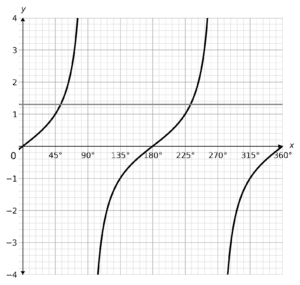
Solutions are approximately x=55\degree\text{, }235\degree
Question 2: Solve \tan(x)=\dfrac{4}{7} between 0\degree and 360\degree, giving your answer(s) to the nearest whole number.
[3 marks]
Using a calculator:
\tan^{-1}\left(\dfrac{4}{7}\right)=30\degreeFind the other value:
30+180=210\degreeQuestion 3: Given that \cos^{-1}(x)=45\degree, find another solution to \cos^{-1}(x) between 0\degree and 360\degree, and work out the value of x.
[4 marks]
As we are solving for cos, the other value will be
360-45=315\degreeWe can now do the inverse of \cos^{-1}(x) to work out the value of x
\cos(45)=\dfrac{\sqrt2}{2}You May Also Like...

MME Learning Portal
Online exams, practice questions and revision videos for every GCSE level 9-1 topic! No fees, no trial period, just totally free access to the UK’s best GCSE maths revision platform.